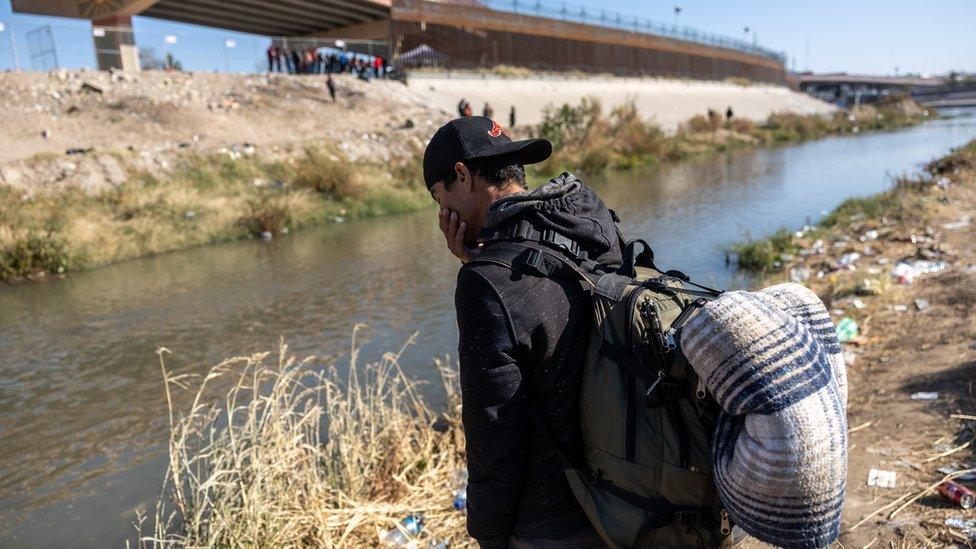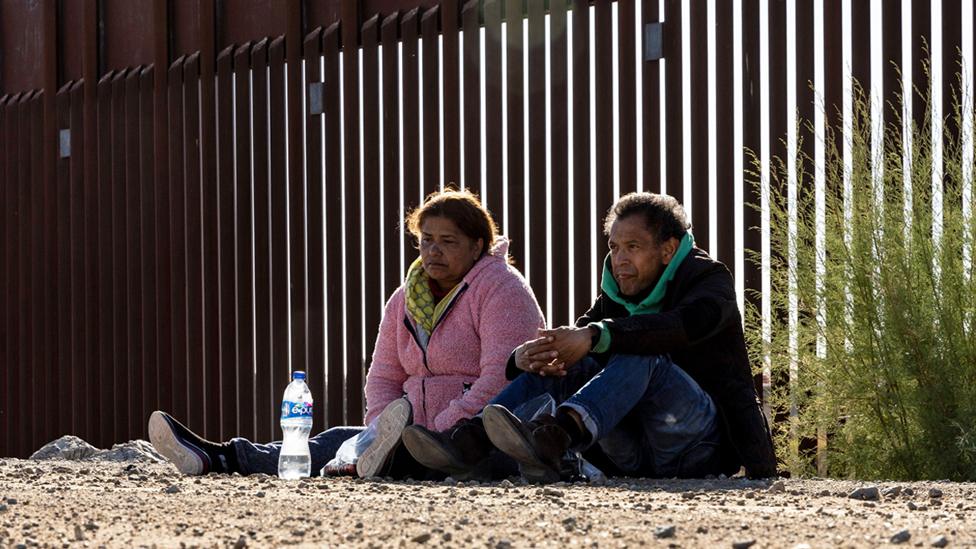Title 42: What is the immigration rule and why has it ended?
- Published
Watch: What is the Title 42 border policy?
After more than three years, a rule that allowed for the rapid expulsion of many illegal migrants has ended.
The end of the Covid-19 pandemic has brought an end to the immigration policy known as Title 42 and the US will now return to its pre-pandemic Title 8 law that governs asylum and deportations.
Tens of thousands of migrants have surged to the US-Mexico border, and US President Joe Biden acknowledged that the change on May 11 would mean "it's going to be chaotic for a little while".
What is Title 42?
It dates back to a 1944 law known as the Public Health Act, which granted US authorities emergency powers to prevent the spread of diseases.
In March 2020, the Trump administration invoked the statute, citing the need to stop the spread of Covid-19 across its borders.
When Title 42 was in place, US authorities were able to swiftly remove migrants crossing the border from Mexico - including asylum seekers - using the pandemic as justification.
Some 2.8 million people were expelled while Title 42 was in place, according to US Customs and Border Protection.
Watch: Drone footage reveals border area in El Paso
Why is Title 42 ending?
After taking office in January 2021, Mr Biden and his administration kept the policy in place and continued to defend it as a public health measure for more than a year.
Citing a diminished public health risk, in April 2022 the US Centers for Disease Control, which oversees US health policy, signalled it would end the policy.
Republican-led states are trying to find way to keep the policy in place. A proposed Senate bill, backed by Arizona Independent Kyrsten Sinema and North Carolina Republican Thom Tillis, would allow for rapid expulsions in a manner similar to Title 42, but without the public-health justification.
What's the impact on the situation on the border?
US officials have processed more than 10,000 arrivals at the border each day this week, thought to be the highest levels ever, and up from about 5,000 in March.
Border facilities on Wednesday were holding some 28,000 migrants, far beyond their capacity, sources told Reuters news agency.
To cope with the influx, the Department of Homeland Security has stationed 24,000 more law enforcement officers and deployed 1,500 active-duty troops at the border.
Meanwhile, Mexico is also sending troops to its border with Central America to control the expected increase in migrants attempting to reach the US.
What is Title 8?
Title 8 is the decades-old pre-pandemic law that governs how migrants are deported. It will now again form the primary legal basis for US immigration policy.
Compared with Title 42, Title 8 allows more migrants to request asylum and be screened for "credible fear" of returning to their country. Those deemed eligible are processed for release and must attend an immigration court, while those who are not are deported.
Migrants caught crossing illegally are rapidly removed and are then subject to five or 10-year bans if caught re-entering the US illegally. Under Title 42, there were no such consequences.
What else is the government doing?
The Biden administration introduced new rules this week that would deny asylum to almost all migrants who cross illegally.
The strict measures would largely ban migrants from applying for asylum in the US if they had travelled through other countries on their way to the US-Mexico border, or failed to first apply online.
Illegal crossers will be deported, barred from re-entering the US for at least five years, and be "presumed ineligible for asylum", according to CBP.
But the new rules are likely to face legal challenges from immigrant advocacy groups.
The Biden administration plans to open new migrant processing centres in Colombia and Guatemala in a bid to help reduce undocumented immigration.
Mexico has agreed to continue to accept 30,000 migrants per month from Cuba, Haiti, Nicaragua and Venezuela, as long as they come by air.
The US, for its part, has agreed to take up to a total of 100,000 people from Honduras, Guatemala and El Salvador who have family in the US.
- Published2 May 2023

- Published20 December 2022

- Published28 April 2023
